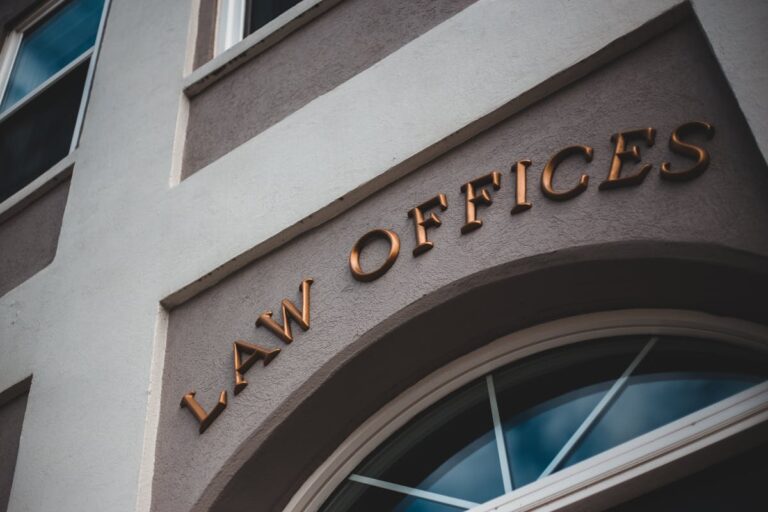New Standard of Proof for Workers’ Compensation Retaliation Cases
The recent shift towards a new standard of proof in workers’ compensation retaliation cases marks a profound change in the legal landscape. This shift places a greater onus onto employers to substantiate their non-retaliatory reasons for adverse actions, and challenges employees to demonstrate that their claim was a pivotal factor in the employer’s decision. This transformation invites deeper exploration into its potential implications for both employers and employees, and raises numerous, complex questions about its impact on workplace equity, employee empowerment, and organizational accountability.
Understanding Workers’ Compensation Retaliation
The intricacies of workers’ compensation retaliation cases often remain shrouded in legal jargon, making it intimidating for many employees. However, enhancing retaliation awareness among workers is vital to safeguarding their rights and fostering a fair workplace environment.
Retaliation, in this instance, refers to any adverse action that an employer takes against an employee for exercising their right to claim workers’ compensation following a work-related injury. This could encompass a range of actions, including termination, demotion, harassment, or any form of discrimination. The underpinning idea is that no worker should suffer negative consequences for rightfully asserting their employee rights, as prescribed by law.
Understanding the dynamics of workers’ compensation retaliation can equip employees with the knowledge to recognize and challenge such unjust actions. It is essential to remember that retaliation is not only morally reprehensible but also illegal under various federal and state laws.
Old Standard of Proof Explained
How, then, did the old standard of proof function in workers’ compensation retaliation cases? Before the recent legislative changes, the old standard of proof relied heavily on the principle of burden shifting. The employee, as the plaintiff, had the initial burden to establish a prima facie case of retaliation. They needed to prove that they engaged in a protected activity, such as filing a workers’ compensation claim, that the employer was aware of the activity, that adverse employment action followed, and that a causal connection existed between the claim and the adverse action.
Once the employee met this burden, it would shift to the employer, who had to provide a legitimate, non-retaliatory reason for the adverse action. If the employer provided such a reason, the burden would shift back to the employee to demonstrate that the reason was a pretext for retaliation. This cycle of burden shifting created a complex, often convoluted process that heavily relied on legal precedents.
The old standard required careful navigation, balancing the rights of the worker with the employer’s rebuttal rights, thereby creating a constant game of legal tug-of-war.
Recent Changes in Legislation
Legislative updates have considerably altered the landscape of workers’ compensation retaliation cases. These changes reflect a significant shift in response to persistent concerns regarding claimant protection and employer liability. The primary aim of these updates is to establish a more balanced playing field, ensuring that both parties are adequately protected under the law.
The recent legislative updates serve to redefine the threshold of evidence required to prove retaliation, placing a greater emphasis on establishing a causal link between the claim and the alleged retaliatory action. These changes are not arbitrary but are founded on thorough studies and rigorous analysis of past cases.
The policy implications of these updates are profound. They necessitate a reevaluation of current practices and protocols, urging employers to adopt more stringent measures to prevent potential retaliation scenarios. For claimants, the updates provide a more secure legal framework, enhancing their ability to seek justice.
New Standard of Proof Unveiled
The revelation of a new standard of proof in workers’ compensation retaliation cases signifies a pivotal shift in the landscape of workers’ rights. This development requires thorough understanding, as it directly impacts the way workers’ compensation retaliation cases are approached and adjudicated. To fully grasp the implications of this change, we will proceed with an extensive analysis of potential scenarios under this newly implemented standard of proof.
Understanding the New Standard
Revealing a significant shift in workers’ compensation retaliation cases, a new standard of proof has been established. This change signifies an increased focus on retaliation awareness and a clear shift in proof burden, causing ripples throughout the industry. Understanding the new standard is essential for both employers and employees to guarantee compliance and protection of rights, respectively.
Previously, employees had to demonstrate that their claim for workers’ compensation was the primary motivating factor for any adverse action taken by their employer. Under the new standard, however, the proof burden has been lessened. Now, an employee only needs to show that the claim was a determining factor in the employer’s decision – a subtle, but significant adjustment.
This new standard of proof encourages retaliation awareness, making sure that employers think twice before taking negative action against a workers’ compensation claimant. It is a persuasive move towards greater employee protection, recognizing that retaliation is not always overt but can also be hidden in seemingly unrelated decisions. By understanding this new standard, employers can avoid costly legal battles, and employees can protect their rights more efficiently.
Impacts on Workers’ Compensation
Revealing a new standard of proof in workers’ compensation retaliation cases has far-reaching impacts on the industry. Primarily, this development fortifies the foundation of worker rights by providing an enhanced legal shield against retaliation. Employers may now think twice before engaging in any retaliatory actions that infringe upon the rights of their employees.
The introduction of this standard amplifies the legal protections available to workers. This is an encouraging step towards fostering a safer and more secure work environment. It instills a sense of security among workers who might otherwise be hesitant to claim compensation due to fear of retaliation. This new standard, consequently, not only serves as a deterrent for unjust practices but also motivates workers to assert their rights without fear.
Retaliation Cases Scenario Analysis
What, then, does this new standard of proof mean for real-world retaliation cases? The answer lies in understanding the altered retaliation dynamics and the resulting impact on workplace accountability.
- The new standard shifts the burden of proof. Previously, the injured worker had to prove the employer’s retaliatory intent beyond a reasonable doubt. Now, the employer must demonstrate a legitimate, non-retaliatory reason for their actions.
- It provides greater protection to workers. It curbs the unfair advantage previously enjoyed by employers, promoting a more balanced, just workplace.
- It increases the likelihood of successful retaliation claims. This enhanced protection may encourage more workers to come forward, thereby exposing more instances of employer malfeasance.
- It fosters a culture of accountability. The new standard promotes transparency and deters employers from retaliating against workers who exercise their rights.

Implications for Retaliation Victims
When an individual becomes a victim of retaliation in the context of workers’ compensation, it often leads to far-reaching implications. These consequences extend beyond the immediate financial strain, often breaching into emotional and psychological territories. The victim’s personal life, career growth, and overall well-being can be drastically impacted, necessitating robust victim support mechanisms.
Victim support is not just about providing emotional assistance; it also encompasses legal representation. With the new standard of proof for retaliation cases, it becomes even more essential for victims to have competent legal representation to navigate through the technicalities of the law. This legal aid can guide them in understanding their rights, preparing a strong case, and ensuring that the retaliation they faced is adequately addressed and the perpetrators held accountable.
Moreover, the new standard of proof might also change the dynamics of workplace interactions. It could potentially lead to heightened fear or caution among whistleblowers, further emphasizing the need for effective protection mechanisms. With the right legal representation and support, however, these victims can confidently confront retaliation, ensuring not only their personal justice but also contributing towards a healthier workplace environment for all.
Business Compliance With New Regulations
As companies navigate the changes brought about by new regulations in workers’ compensation retaliation cases, they must effectively adapt to guarantee compliance. This adaptation requires a steadfast commitment to both business ethics and regulatory adherence.
- Understanding the New Regulations: To guarantee compliance, companies must first thoroughly comprehend the new standards. This understanding allows for informed decision-making and proper adaptation of existing protocols.
- Amending Company Policies: Companies must review and amend their existing policies to align with the new regulations. This step is essential in avoiding potential violations and fostering an ethical working environment.
- Training Employees: Companies need to provide extensive training to their employees on the new regulations. This measure guarantees an understanding of the changes and their implications at all levels of the organization.
- Regular Compliance Check: Regular audits are necessary to guarantee ongoing compliance. These checks help in identifying potential issues early, facilitating prompt corrective actions.
Case Studies Under New Standards
Numerous case studies have emerged demonstrating how companies have adapted to the new standards in workers’ compensation retaliation cases. These instances illuminate a shifting landscape in the legal field, reflecting the evolving dynamics of employer-employee relations.
A case study analysis of XYZ Corporation reveals the company’s successful compliance with new regulations. After the introduction of the new standards, XYZ Corporation swiftly revamped its internal policies to prevent any type of retaliation against workers seeking compensation. Their proactive approach showcases an ideal adaptation model for other businesses.
In another instance, ABC Enterprises faced legal action due to alleged retaliation against a worker who filed for compensation. The court ruled in favor of the worker, setting a new legal precedent that emphasizes the gravity of such offenses. The case underlines the necessity for companies to reassess their existing policies and align them with new standards.
These case studies underscore the immediate and lasting impact of the new standards. They serve as a wake-up call for companies to take proactive measures, ensuring robust compliance and preventing any potential retaliation against workers seeking compensation. Companies failing to respond appropriately may face significant legal and financial repercussions.
Future Predictions for Workers’ Compensation
Reflecting on the case studies presented, it’s clear that the landscape of workers’ compensation is rapidly evolving. This evolution is expected to influence future employer responsibilities and worker rights in notable ways.
Four key predictions can be made about the future of workers’ compensation:
- Increased employer responsibility: Businesses will likely be held to higher standards of safety and injury prevention, requiring them to invest more in employee training and workplace safety measures.
- Expanded worker rights: There may be an expansion of worker rights, particularly regarding protection against retaliation for filing a claim.
- Technological integration: The use of technology in processing claims, managing case data, and delivering compensations will become more prevalent, contributing to increased efficiency and transparency.
- Legal complexities: As the system evolves, the legal landscape surrounding workers’ compensation could become more complex, necessitating specialized legal expertise for both employers and employees.
In light of these predictions, it’s essential for both employers and employees to stay informed about their changing roles and responsibilities in the workers’ compensation arena. The future promises a more balanced, efficient, and transparent system that better protects worker rights while holding employers accountable.
Frequently Asked Questions
What Are the Common Signs of Workers Compensation Retaliation?
Common signs of workers’ compensation retaliation include sudden negative performance reviews, changes in job duties, or even termination post-claim. Employee awareness of these retaliation indicators is essential in promoting workplace fairness and justice.
Does the New Standard of Proof Apply to All Industries?
Yes, the new standard of proof applies universally across all industries. The industry implications are profound, as this standard reshapes legal interpretations and offers greater protection against workers’ compensation retaliation.
How Can Employees Protect Themselves From Workers Compensation Retaliation?
Employees can mitigate retaliation risk by understanding their rights, documenting all interactions, keeping thorough records of injuries, and promptly reporting any perceived retaliation to appropriate management, human resources or their union representative, if applicable.
How Does the New Standard of Proof Affect Small Businesses Specifically?
The new standard of proof introduces cost implications and compliance challenges for small businesses, as they must now implement more rigorous procedures to avoid allegations of retaliation in workers’ compensation cases.
Can the New Standard of Proof Be Challenged in Court?
Yes, the new standard of proof can be legally challenged in court. Through robust litigation strategies and reliance on court precedents, parties can seek to overturn or modify the standard based on its applicability and fairness.






